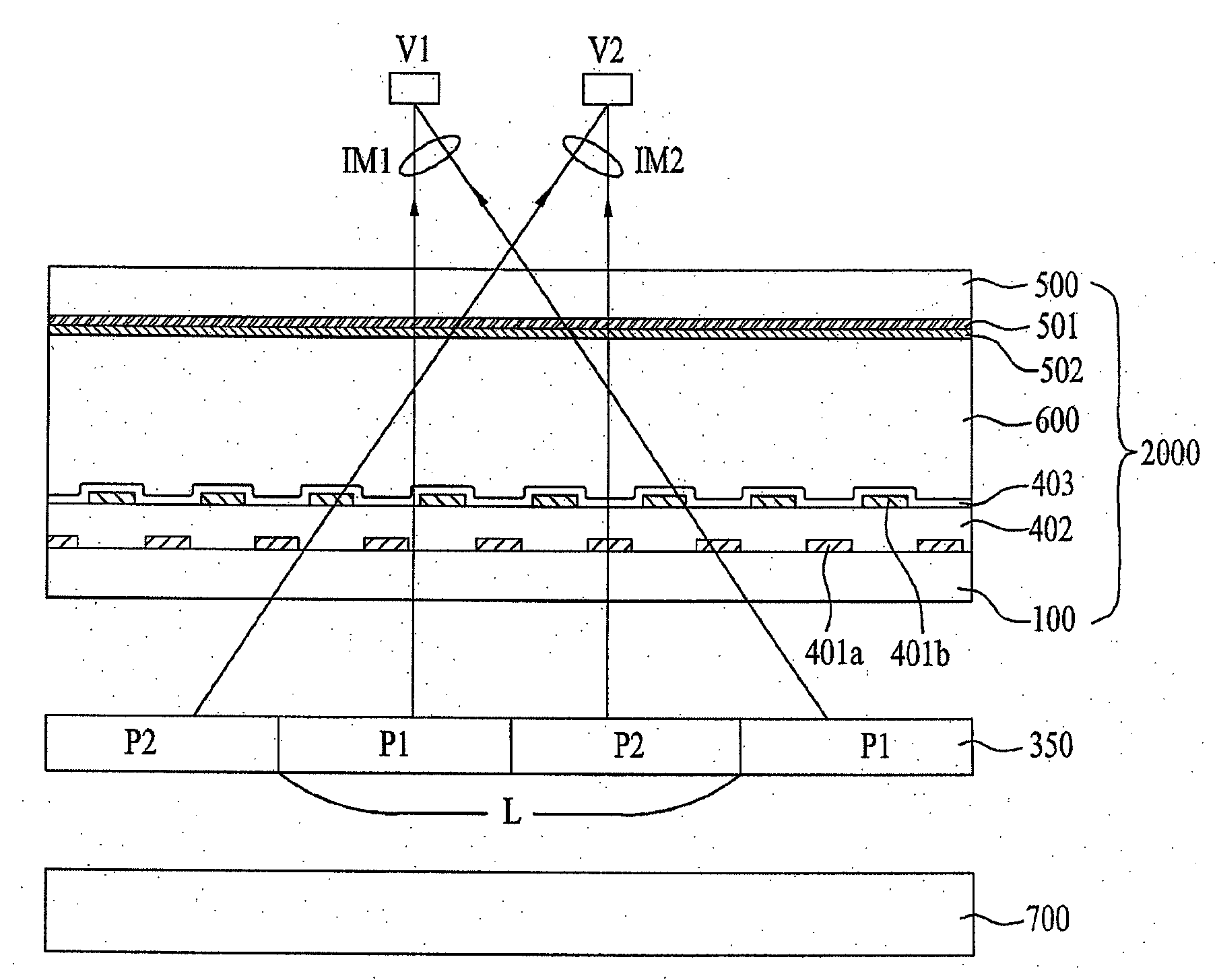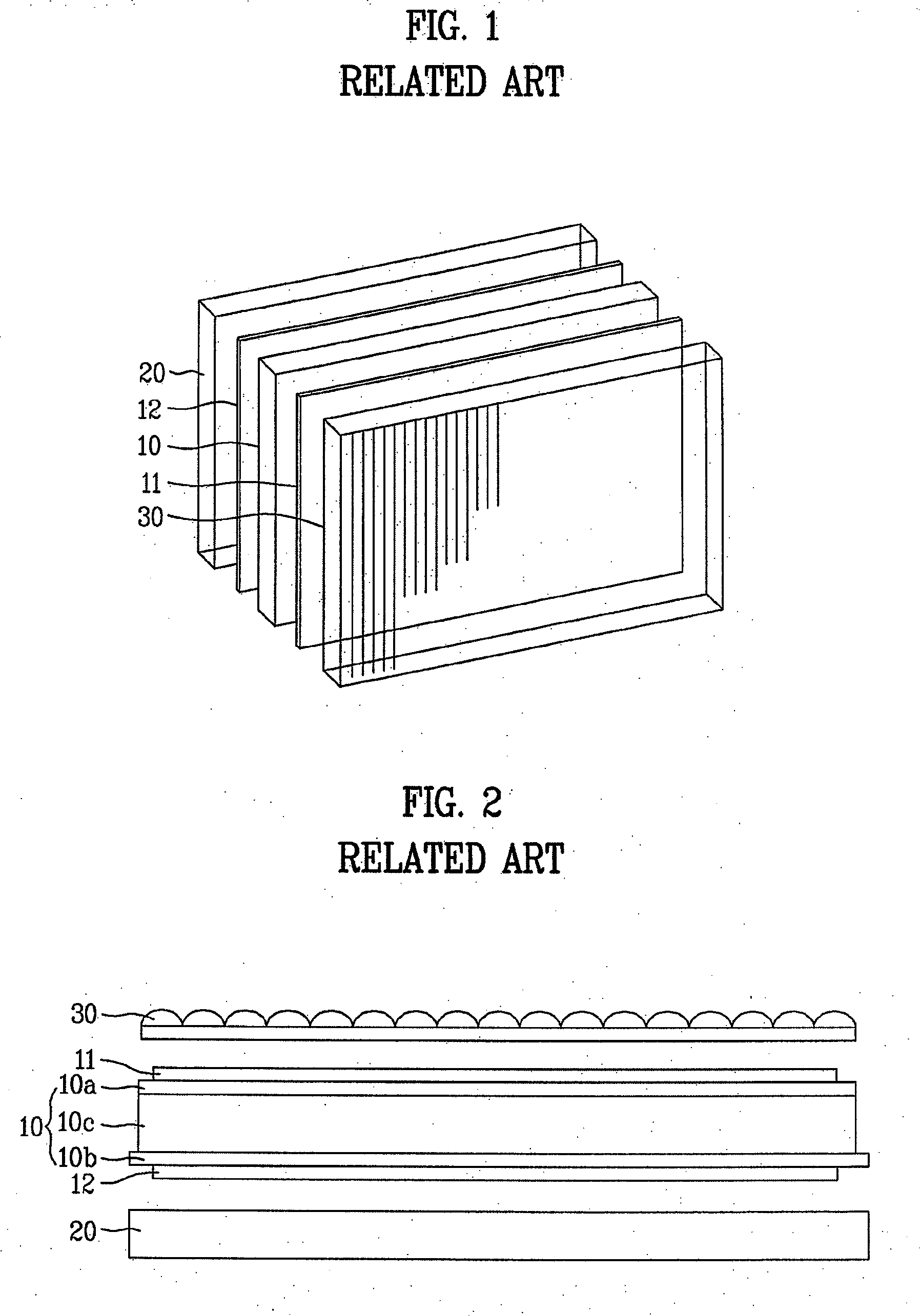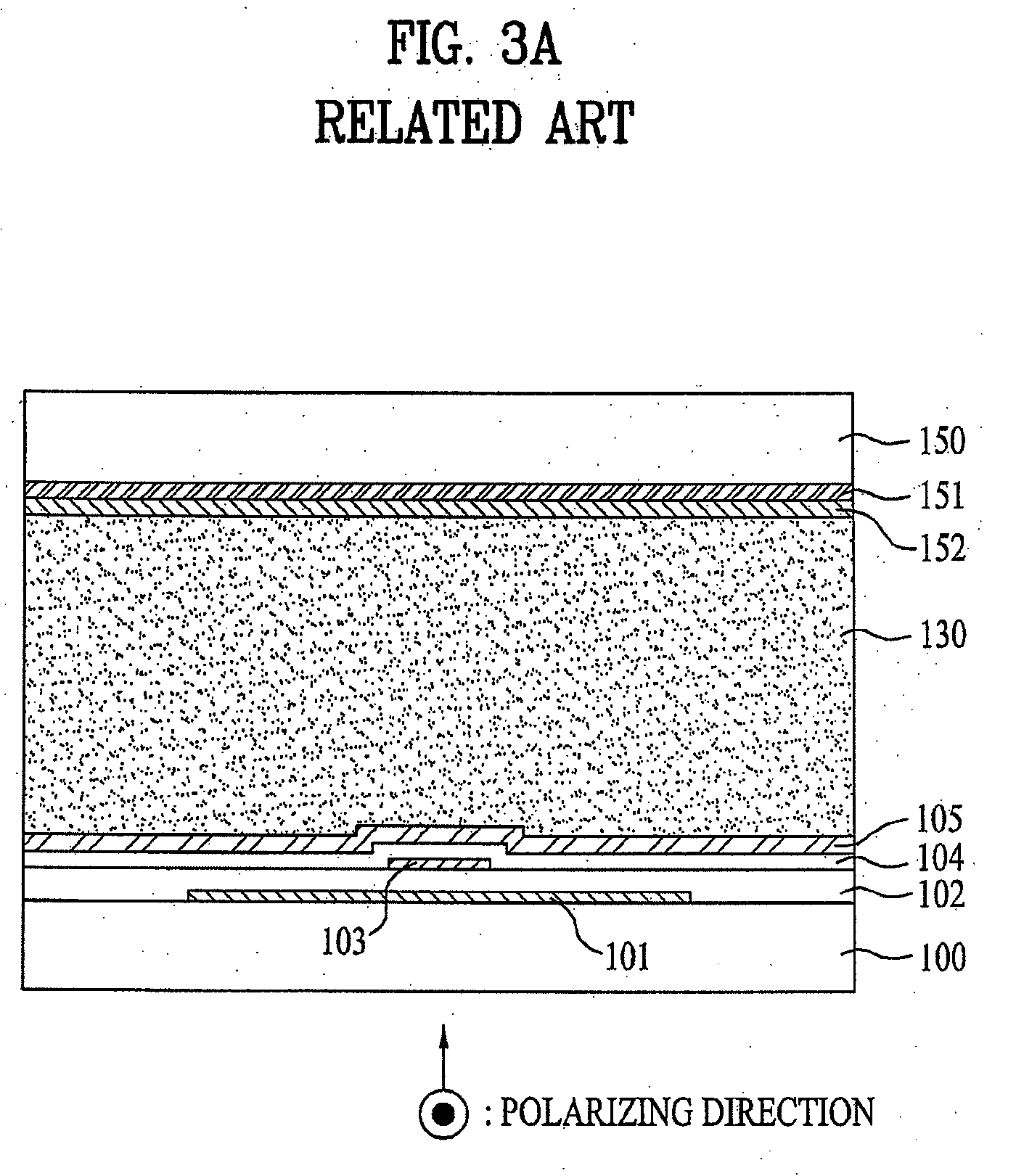Electrically-driven liquid crystal lens and stereoscopic display device using the same
a liquid crystal lens and stereoscopic display technology, applied in the direction of optics, instruments, electrical equipment, etc., can solve the problems of deteriorating image quality, deteriorating transmissivity, and visual sensitivity deterioration
- Summary
- Abstract
- Description
- Claims
- Application Information
AI Technical Summary
Benefits of technology
Problems solved by technology
Method used
Image
Examples
first embodiment
[0093]FIG. 7A is a sectional view illustrating an electrically-driven liquid crystal lens and FIGS. 7B and 7C are views illustrating alignment shape of liquid crystals on a per distance basis in one lens region before and after application of voltages in the configuration of FIG. 7A.
[0094]As shown in FIG. 7A, in the electrically-driven liquid crystal lens according to a first embodiment of the present invention, the first and second alignment films 403 and 502 are aligned in the longitudinal direction of the first electrodes 401a and 401b on the first substrate 400 (in a direction into the drawing). In this case, the liquid crystals of the liquid crystal layer 600 have positive dielectric constant anisotropy. Each of the first and second alignment films 403 and 502 is a horizontal alignment film having a tilt angle of less than 1°, and the alignment direction thereof is defined via rubbing. The first and second alignment films 403 and 502 are subjected to rubbing in an anti-paralle...
second embodiment
[0097]FIG. 8A is a sectional view illustrating an electrically-driven liquid crystal lens and FIGS. 8B and 8C are views illustrating alignment shape of liquid crystals on a per distance basis in one lens region before and after application of voltages in the configuration of FIG. 8A.
[0098]As shown in FIG. 8A, in the electrically-driven liquid crystal lens according to a second embodiment of the present invention, the first and second alignment films 403 and 502 are aligned perpendicular to the longitudinal direction of the first electrodes 401a and 401b on the first substrate 400 (in a horizontal direction in the drawing). In this case, the liquid crystals of the liquid crystal layer 600 have positive dielectric constant anisotropy. Each of the first and second alignment films 403 and 502 is a horizontal alignment film having a tilt angle of less than 1°, and the alignment direction thereof is defined via rubbing. The first and second alignment films 403 and 502 are subjected to ru...
third embodiment
[0101]FIG. 9A is a sectional view illustrating an electrically-driven liquid crystal lens and FIGS. 9B and 9C are views illustrating alignment shape of liquid crystals on a per distance basis in one lens region before and after application of voltages in the configuration of FIG. 9A.
[0102]As shown in FIG. 9A, in the electrically-driven liquid crystal lens according to a third embodiment of the present invention, the first and second alignment films 403 and 502 are aligned in the longitudinal direction of the first electrodes 401a and 401b on the first substrate 400 (in a direction into the drawing). In this case, the liquid crystals of the liquid crystal layer 600 have negative dielectric constant anisotropy. Each of the first and second alignment films 403 and 502 is a vertical alignment film having a tilt angle of more than about 89°, and the alignment direction thereof is defined by rubbing. The first and second alignment films 403 and 502 are subjected to rubbing in an anti-par...
PUM
| Property | Measurement | Unit |
|---|---|---|
| tilt angle | aaaaa | aaaaa |
| tilt angle | aaaaa | aaaaa |
| voltages | aaaaa | aaaaa |
Abstract
Description
Claims
Application Information
 Login to View More
Login to View More - R&D
- Intellectual Property
- Life Sciences
- Materials
- Tech Scout
- Unparalleled Data Quality
- Higher Quality Content
- 60% Fewer Hallucinations
Browse by: Latest US Patents, China's latest patents, Technical Efficacy Thesaurus, Application Domain, Technology Topic, Popular Technical Reports.
© 2025 PatSnap. All rights reserved.Legal|Privacy policy|Modern Slavery Act Transparency Statement|Sitemap|About US| Contact US: help@patsnap.com



